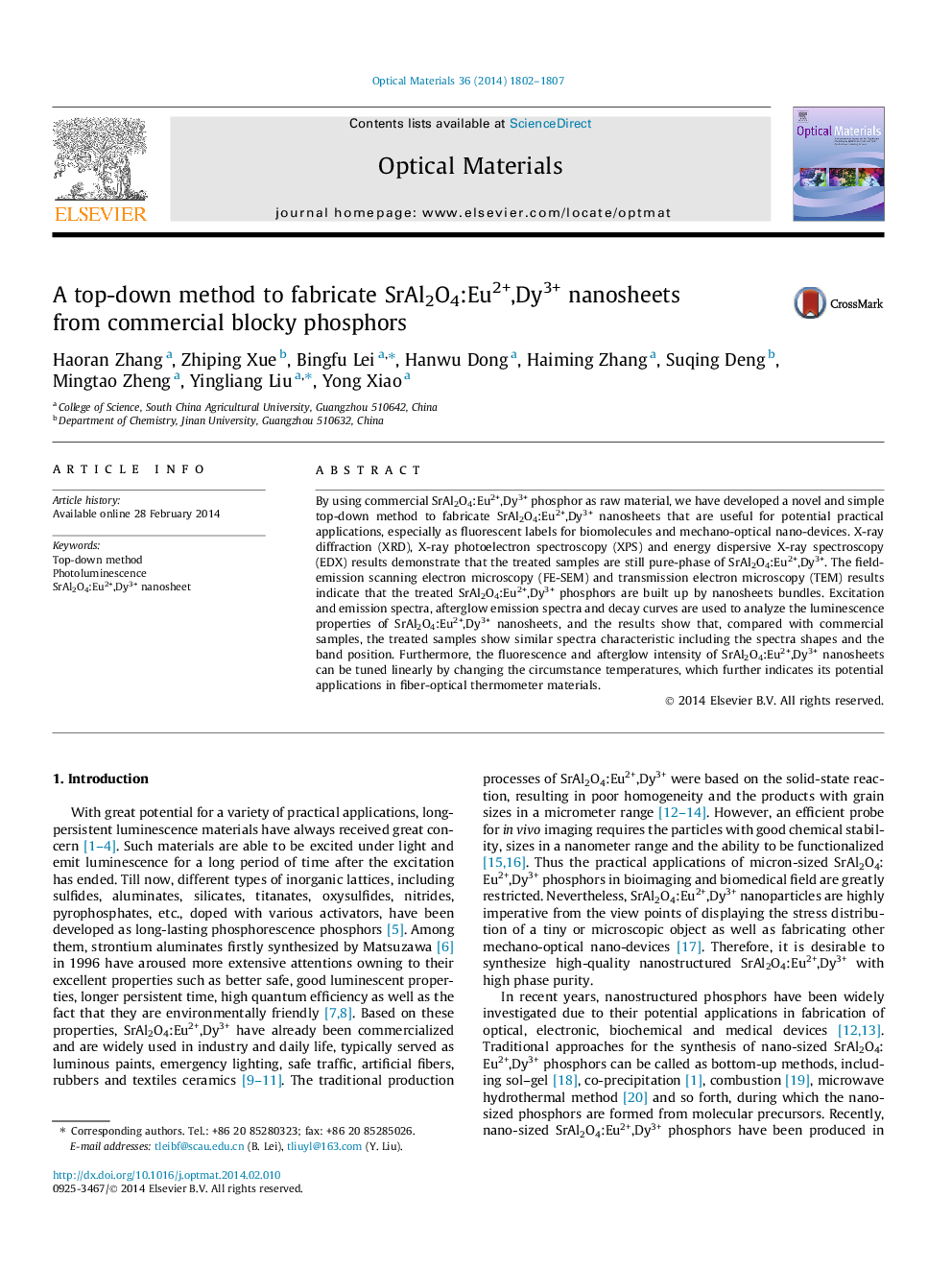| Article ID | Journal | Published Year | Pages | File Type |
|---|---|---|---|---|
| 1494087 | Optical Materials | 2014 | 6 Pages |
•The PLNS were fabricated by treating blocky SrAl2O4 phosphors via a special top-down method.•This way is simple and the final products with excellent luminescent properties compared with other methods.•The PLNS show similar photoluminescence intensity compared with commercial counterpart.•The PLNS have potential applications in optical fiber temperature sensor and bioimaging.
By using commercial SrAl2O4:Eu2+,Dy3+ phosphor as raw material, we have developed a novel and simple top-down method to fabricate SrAl2O4:Eu2+,Dy3+ nanosheets that are useful for potential practical applications, especially as fluorescent labels for biomolecules and mechano-optical nano-devices. X-ray diffraction (XRD), X-ray photoelectron spectroscopy (XPS) and energy dispersive X-ray spectroscopy (EDX) results demonstrate that the treated samples are still pure-phase of SrAl2O4:Eu2+,Dy3+. The field-emission scanning electron microscopy (FE-SEM) and transmission electron microscopy (TEM) results indicate that the treated SrAl2O4:Eu2+,Dy3+ phosphors are built up by nanosheets bundles. Excitation and emission spectra, afterglow emission spectra and decay curves are used to analyze the luminescence properties of SrAl2O4:Eu2+,Dy3+ nanosheets, and the results show that, compared with commercial samples, the treated samples show similar spectra characteristic including the spectra shapes and the band position. Furthermore, the fluorescence and afterglow intensity of SrAl2O4:Eu2+,Dy3+ nanosheets can be tuned linearly by changing the circumstance temperatures, which further indicates its potential applications in fiber-optical thermometer materials.
